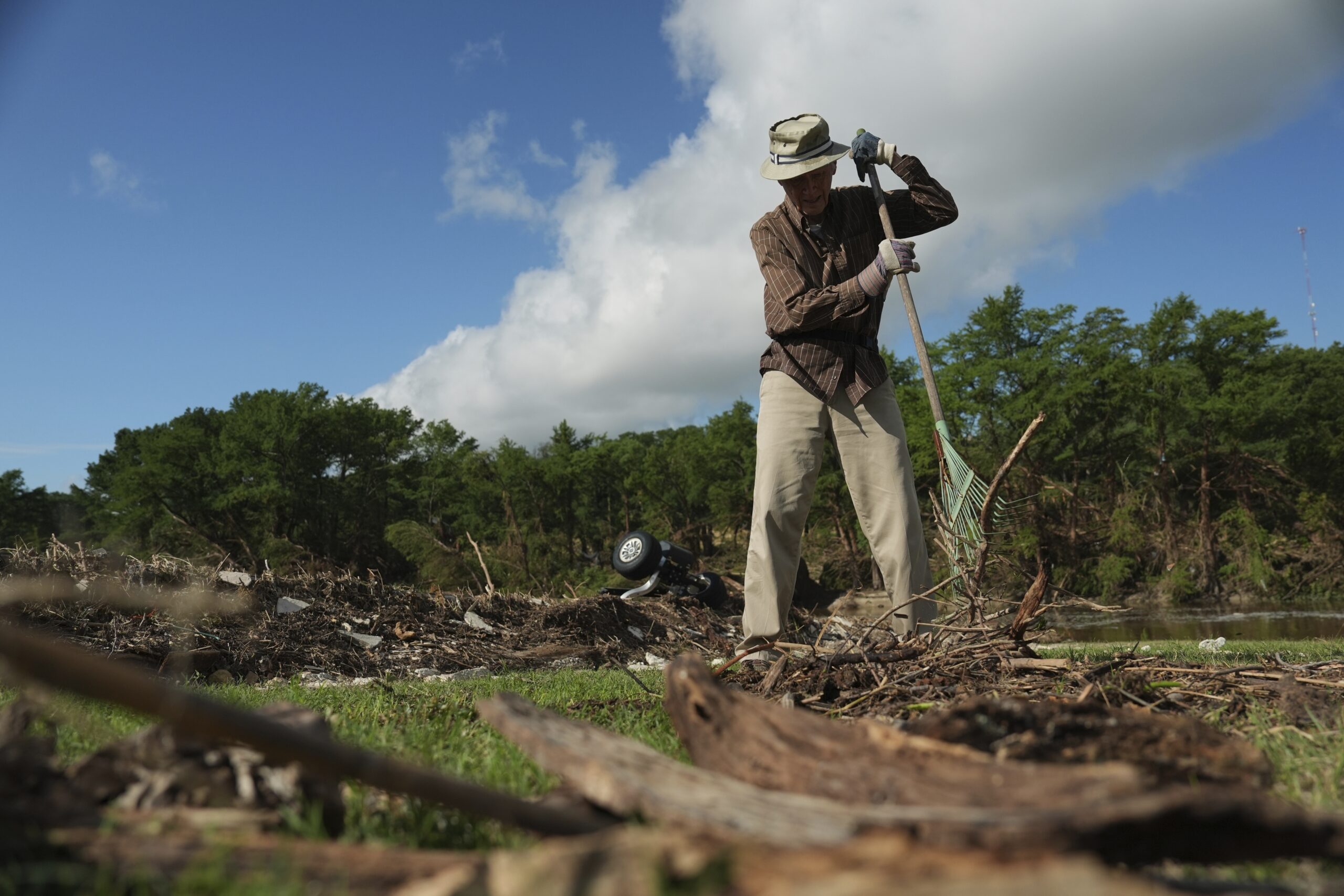ustxtxb_obs_2002_09_27_50_00020-00000_000.pdf
Page 13
Bridge continued from page 9 Wbile Martinez and Bruni duke it out on the frontlines, another battle of the bridge takes place behind closed doors, because the bridges are cash cows not just for the municipalities that build them, but increasingly, judging by the example of Laredo, for the consultants paid to shepherd the projects through the corridors of power. Since no individual dog in Laredo politics barks loudly enough to bury the bone, both sides have put bigger dogs on the payrolldogs on a sniffing basis with the biggest dog of all, George W. Bush, who will have to sign the Presidential Permit required of any new international bridge project. The county has hired James Francis, a way-back Bush pioneer and Texas Department of Public Safety Commissioner, at a renewable salary of $12,500 per month. So far, according to county documents, Francis has been paid a total of $210,000 for his services. Not a bad return on Francis’ investment in Bush’s presidential campaign. And as a condition of Francis’ employment, the county was also required to hire the Washington, D.C. lobbying firm of Black, Kelly, Scruggs & Healy for another $150,000. BKSH is the government-relations subsidiary of the world’s largest communications and P.R. firm, Burston-Marsteller. The city, in response, has hired Infrastructure Solutions, Inc., the Austin-based firm run by Karen Johnson, who served on the BushCheney transition team, at $20,000 per month. Johnson’s contract, announced in May 2001, has already cost the city more than $300,000. “I think it’s an accurate picture to paint,” says city manager Larry Dovalina, “that the county hired an 800-pound gorilla. And I think we hired a young, suave, sophisticated lady who has equally as strong or stronger connections than Jim Francis.” This marks the first time in Laredo’s successful four-bridge history that the city has felt compelled to hire an outside consultant in pursuit of a Presidential Permit. “It’s an escalation.” What exactly the consultants are hired to do, beyond deliver the permit, is a bit of a mystery in its specifics. Laredo describes Johnson’s duties as getting the process of the presidential permit “expedited and on the right track.” Martinez describes Francis’ role, a bit more frankly, as “basically a door-opener, if I may call it that.” So far as is publicly known, Francis has led Martinez and his commissioners on a junket to Washington, D.C., where the Webb County delegation got a meeting with BKSH’s Charles Black, who is now, Martinez says, “part of the team,” neglecting to mention that Black has been paid to play. The Department of State, which has stated that it will not consider competing proposals, is the target. Once the Presidential Permit is secured, based on the formal okay of the Department of State, more agencies get involved EPA, Army Corps of Engineers, Customs, INS, even, since the Rio Grande is still classified as a navigable river, the Coast Guard. “This,” Martinez reports, “is where Mr. Black as well as some of the other individuals that are on our team will obviously give us the help that we’ve got to have. We have yet to meet with some of the key people, but with the Department of State, we have already met in Washington. At this point, as we understand it, the city has yet to really complete their documentation.” Not so, says Dovalina. Recent legislation requires for the first time that bridge applications go through the Texas Department of Transportation before submittal to the feds. He says TXDOT, still working out the kinks of its new role, is presently reviewing the city’s application materials. It is the city’s understanding that its application is the only one presently under TXDOT review. But just to confuse the issue, TXDOT reports that it has indeed received an application from Webb County, but returned it as incomplete. And while there have been preliminary discussions with the city, TXDOT says that it has yet to receive any application materials at all from Laredo. Regardless, Dovalina’s not going to be drawn into a race. In the best of times, the acquisition of Presidential Permits is a three-to-five-year process, and one that the city has successfully navigated before.The city has the experience and the system in place. Told that Martinez thinks the county has a head start, Dovalina says simply, “I don’t think it makes any difference.” The county had previously grabbed for a piece of the pie on Bridge 3the Columbia Bridge, 15 miles upriverpermitted under the Clinton Administration. But eventually the county withdrew and agreed to let the city proceed as sole applicant. Dovalina figures something much like that will eventually happen with Bridge 5. And Bruni, he just can’t wait to make sure that’s what happens.The county has obligations he figuresand he has a list of his own pet projectsbut building bridges is not one of them. He’s going to take the county’s bridge budget, he says, and redirect it to “quality of life issues.” He will explore the possibility of selling county bridge preparations to the city, if any of it turns out to be useful, as an attempt to salvage some of the waste. As for Francis, “Francis is just a way to see how [Martinez] could jam up the process.” As for Johnson: “We wouldn’t have had to spend that money if it wasn’t for the county” And about that county:”Go grade a road or something.” “I will kill this issue January 1,” Bruni says, again. And perhaps the balance will settle firmly, finally, on the side of the city, where perhaps it will stay. At least until 2006, when Laredo mayor Elizabeth G. Floresa Martinez supporter in the county judge race succumbs to term limits. Louis Bruni is probably not the only politician in Laredo who wouldn’t be surprised to see Mercurio Martinez, Jr. run to succeed her. And in the meantime, bridge or no bridge, county or city, the consultants will continue at the trough, collecting the revenue generated by their own bridges to Bush. Last time we checked, contributing writer Brad Tyer was on the road somewhere between Texas and Montana. 20 THE TEXAS OBSERVER 9/27/02


